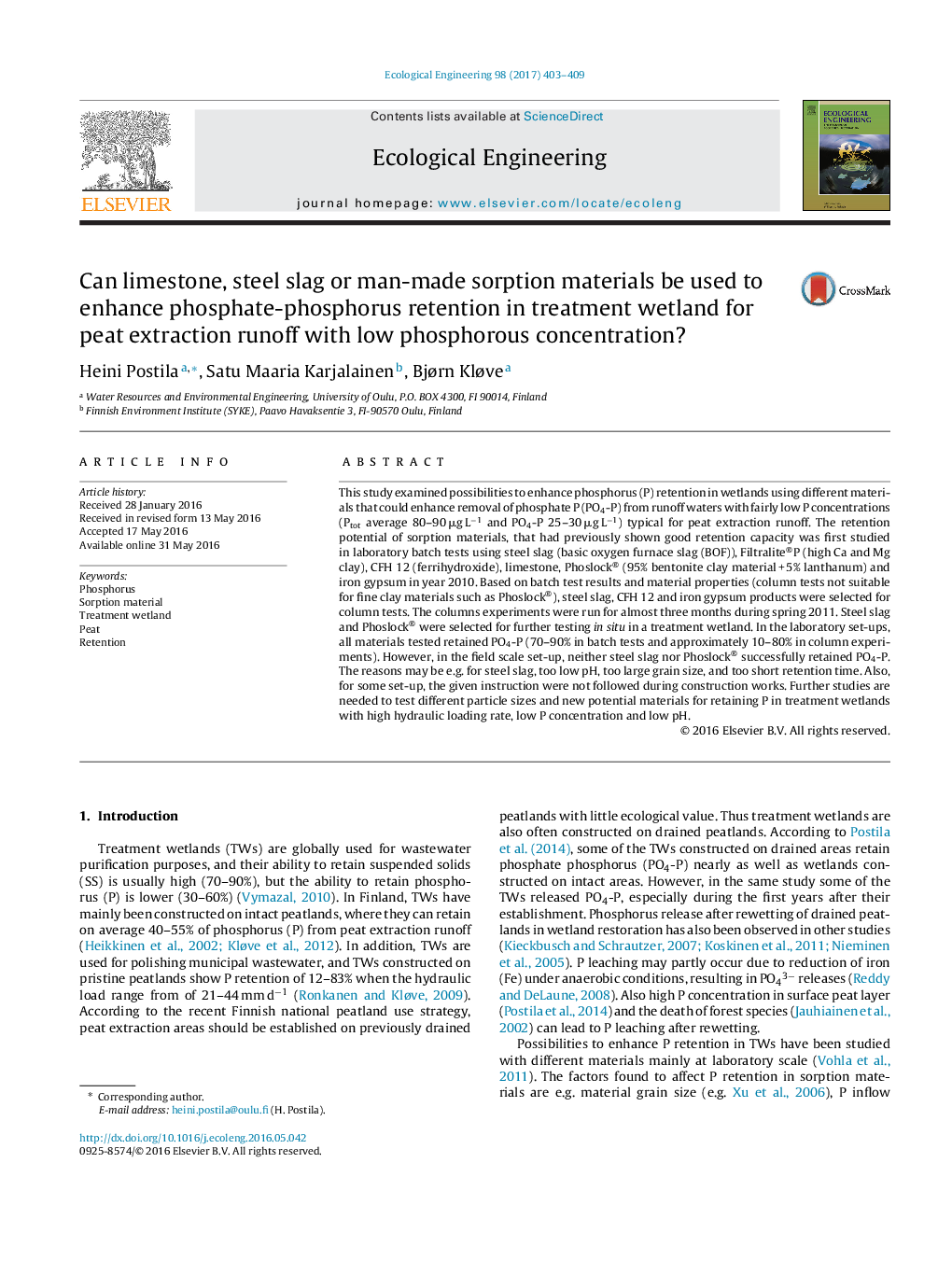| Article ID | Journal | Published Year | Pages | File Type |
|---|---|---|---|---|
| 5744043 | Ecological Engineering | 2017 | 7 Pages |
â¢Sorption materials retained PO4-P peat extraction runoff in laboratory tests.â¢Enhanced PO4-P retention by sorption materials was not observed at field scale.â¢E.g. grain size, pH and retention time should be considered when choosing materials.
This study examined possibilities to enhance phosphorus (P) retention in wetlands using different materials that could enhance removal of phosphate P (PO4-P) from runoff waters with fairly low P concentrations (Ptot average 80-90 μg Lâ1 and PO4-P 25-30 μg Lâ1) typical for peat extraction runoff. The retention potential of sorption materials, that had previously shown good retention capacity was first studied in laboratory batch tests using steel slag (basic oxygen furnace slag (BOF)), Filtralite®P (high Ca and Mg clay), CFH 12 (ferrihydroxide), limestone, Phoslock® (95% bentonite clay material + 5% lanthanum) and iron gypsum in year 2010. Based on batch test results and material properties (column tests not suitable for fine clay materials such as Phoslock®), steel slag, CFH 12 and iron gypsum products were selected for column tests. The columns experiments were run for almost three months during spring 2011. Steel slag and Phoslock® were selected for further testing in situ in a treatment wetland. In the laboratory set-ups, all materials tested retained PO4-P (70-90% in batch tests and approximately 10-80% in column experiments). However, in the field scale set-up, neither steel slag nor Phoslock® successfully retained PO4-P. The reasons may be e.g. for steel slag, too low pH, too large grain size, and too short retention time. Also, for some set-up, the given instruction were not followed during construction works. Further studies are needed to test different particle sizes and new potential materials for retaining P in treatment wetlands with high hydraulic loading rate, low P concentration and low pH.
